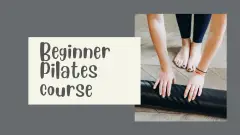The benefits of doing Pilates include improved posture and back health, better abdominal tone and increased flexibility. However, many of the original exercises that were developed and taught by Joseph Pilates require a high level of skill and strength. For this reason, modifications or variations of the original exercises are often more suitable for beginners. This mini Pilates exercises for beginners routine includes 2 modified Pilates exercise and one exercise that isn’t an original Pilates exercise but follows the Pilates principles. There are also instructions for how to find the “neutral pelvis” position, which is key to doing Pilates effectively.
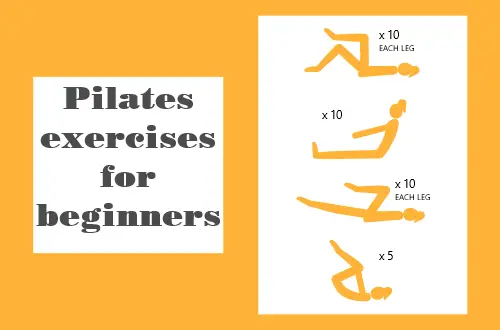
The Pilates principles
Pilates created his method around some basic principles: breathing, concentration, control, centring, precision and flow. “Centring” is the principle that we should have strong core muscles to support the spine and stabilise the body. Exercises 2-4 in this routine are based on original Pilates core strengthening exercises. Exercise 1 isn’t an original Pilates exercise but follows Pilates principles.
Pilates exercises for beginners routine
You need some sort of cushioning for your spine to do this routine – ideally an exercise mat. See an exercise mat buying guide here.
Please see here for general exercise safety guidelines.
First – understand neutral pelvis
To do Pilates, you need to understand pelvic alignment. The pelvis hinges on the spine to allow movement. The natural resting position should be “neutral”, that is not tilting forwards or backwards. Lack of activity, too much time spent sitting and other lifestyle factors can lead to bad pelvic alignment. In women, especially after pregnancy, the pelvis is often in a forward tilting position, accompanied by poor abdominal tone. Doing Pilates properly will help to correct this and strengthen the core abdominal muscles. In exercises like heel taps and single leg stretch, although the movement is in the legs, you need to concentrate on keeping the core engaged. The core muscles should be working to keep the pelvis in the neutral position as the legs are moving. Here’s how to find neutral pelvis:

The routine
Repeat this routine 3 times for a 10 minute workout.
Exercise #1 heel taps
This isn’t an original Pilates exercise, but it’s popular in beginner Pilates programs as it’s good for getting used to holding on to the neutral position. Do 10 heel taps on each leg.
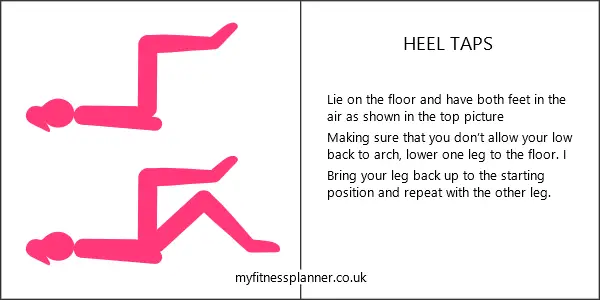
Exercise #2 Pilates roll up modification
In the full Pilates roll up, you would go from lying flat on the floor to a sitting position. You need very good core control to do this safely, without risking back injury. With this modification, you start in the upright position and only roll down part of the way before rolling back up. Do 10 of these.
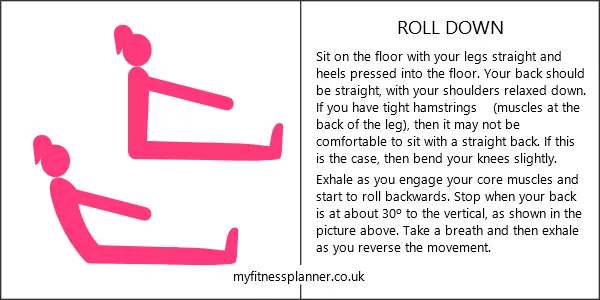
Exercise #3 Single leg stretch
This is a slight modification on the original Pilates exercise. In the original exercise, the hands hold onto each leg as it comes into the chest and the head and shoulders are lifted. Here, your head stays on the floor and the arms stay by your side. Do 10 on each leg.
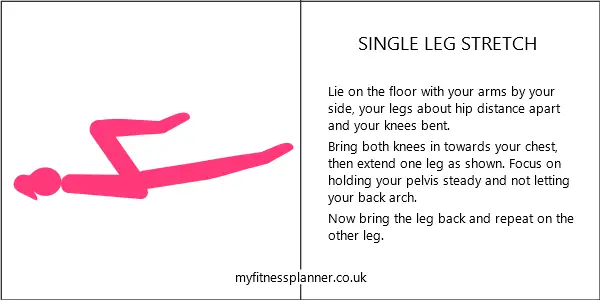
Exercise #4 Rolling like a ball
Another original Pilates exercise. Make sure you have good spine cushioning for this one. Do 5 of these.
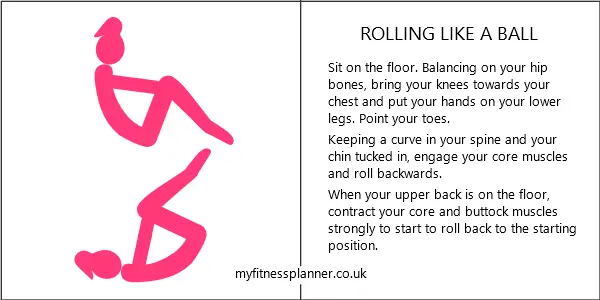
Full routine
Heel taps – 10 on each leg
Roll downs – 10
Single leg stretch – 10 on each leg
Rolling like a ball – 5

